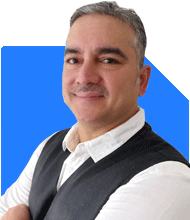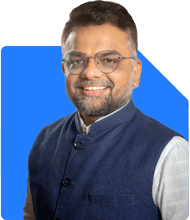I have 40 shares of Voltas@919/- now it is 780/-should I hold or exit?
Ans: Voltas Limited was incorporated on 6th September, 1954 under TATA Group. The Company is jointly promoted by Switzerland's Volkart Brothers and India's Tata Sons Pvt Ltd. It has established itself as the undeniable leader in Cooling Products, and No. 1 Room Air Conditioner brand, in India. It is also a project specialist and provider of engineering solutions. Its wide range of offerings in the Unitary Product segment includes Room Air Conditioners, Air Coolers, Water Dispensers, Water Coolers, Commercial Refrigeration and Commercial Air-conditioning products. It is a provider of Engineering Solutions to diversified range of industries in areas of Heating, Ventilation and Air Conditioning, Refrigeration, Electro-mechanical projects, Electrification, Textile Machinery, Mining and Construction equipment, Water Management & Treatment, Cold Chain solutions, and Indoor Air Quality Management.
Voltas' operations have been organized into three independent business-specific clusters viz. Electro-Mechanical Projects & Services, Engineering Products & Services and Unitary Cooling Products. It has manufacturing units located at Pantnagar, Uttarakhand and Waghodia, Gujarat. It has presence at eight major International Locations: Dubai, Abu Dhabi, Qatar, Sultanate of Oman, Kingdom of Saudi Arabia, Mozambique, Bahrain and Republic of Singapore.
For the manufacture of machine tools, the company promoted Scottish Indian Machine Tools Ltd during the year 1963 in collaboration with Scottish Machine Tool Corporation of Glasgow. During the year 1964, the company made a collaboration agreement with Eaton Yale and Towns, U.S.A., for the manufacture of Yale forklift trucks. Also in the same year, Voltas had joined the Mine Safety Appliances Co., U.S.A., and Associated Battery Makers (Eastern) Ltd., Calcutta in the promotion of Mine Safety Appliances Ltd., Calcutta, a joint venture for the manufacture of miners' electric safety cap lamps and other types of safety and protective equipment, appliances, detection and measuring devices. A new division, the Agro-Industrial Products Division was added in the year 1966. With effect from 1st July of the year 1979, Tata-Merlin & Gerin Ltd (TMG) and the National Electrical Industries Ltd (NEI) were amalgamated with the company. Voltas had entered into an agreement with May & Christe of West Germany in the year 1982 for the manufacture of dry type transformers of cast-resin design. The machine tool division of the company made an agreement with Fanuc of Japan in the year 1988 for the technical collaboration to produce CNC drilling centres.
With effect from 1st March of the year 1989, Volrho Ltd was amalgamated with the company as per the order of BIFR. The machine tools division of the company had introduced Fanuc CNC drilling centres in the period of 1990. During the year 1991, the appliances business division of the company had launched the ductable split air-conditioner, specifically needed for shops, showrooms and general office areas. Also in the same year, an agreement was signed for updating technology and for the manufacture of new models of P&H hydraulic cranes. During the year 1992, the company restructured its operations into product group I comprising refrigerators, pharmaceuticals and consumer products and beverages while product group I (A) include textile machinery. Product group II consisted of machine tools, materials handling facility, industrial machinery, air-conditioning pumps and projects. Group III comprised of chemicals plant, chemicals division and agro-industrial products. The cooling appliances business of the company had launched four new products in the year 1993 viz., water coolers filled with purifiers ductable and slim-line 3 tonne air-conditioners, ceiling mounted split in 1.5 and 3 tonne capacities and 2 tonne room split units. Also in the same year, the pharmaceutical and consumer products division was closed and had also withdrawn from the beverages business. In the year 1994, Voltas had introduced 250 L refrigerator in the market under the home appliances division.
Voltas bagged Good Corporate Citizen Award in the year 1995 and also the company had introduced `Soft Look' models of refrigerator in 165 L. & 200 L segments. Pumps and projected business division of the company had successfully developed, manufactured and commissioned the largest sizes of horizontal and vertical pumps in its range during the year of 1996. Voltas had entered into a lease rental agreement with SIPL for lease of factory premises of WNC in the year 1997 for a period of 18 months for a total consideration of Rs 10.250 million and also in the same year, the company had finalised yet another contract as original equipment manufacturer (OEM) with one of the white goods majors, LG Electronics, to manufacture and supply direct cool refrigerators. The Company had commissioned Dadra plant in the year 1998 and in end of the same year 1998, Voltas won two of the world's biggest orders in the mining sector from Coal India Ltd (CIL), such as Rs 9180 million 2 shovels (P&H) and 160 dump trucks (Unit Rig).
During the year 2000, L. G. Electronics India and Voltas had entered into a tie-up for the 12,00,000 direct-cool refrigerators from the latter for the next three years. Voltas had entered into road construction equipment during the year 2001 under the engineering products and services segments. Also in the same year of 2001, the company had re launched air conditioners under the brand name `Verdant', a premium model targeted at the retail segment. During the year 2002, Voltas made a Joint Venture agreement with Sermo Montaigu, France for perfect moulds. Voltas entered into a distribution tie-up with the 62 million euro Italian air-conditioning major Uniflair in the year 2004, which specialises in the design, production and supply of precision air conditioning and cooling solutions for telecom and internet applications. Also in the same year, made tie-up with RBS Home Appliances Ltd for the use of 640 service centres that Voltas had across the country for after sales service. Simtools Ltd became a wholly owned subsidiary of the company from 27th August of the year 2005. The Company had launched new range of water dispensers in the saem year of 2005.
Voltas had entered into the water treatment business, had undertaken a project at Salt Lake City in Kolkata during the year 2007. The Company had launched a whole new range of Room ACs for the premium and luxury segments in March of the year 2008. Voltas had purchased 13,821,000 equity shares of Rs 10 each of Universal Comfort Products (P) (UCPL) in June of the year 2008, a 50:50 joint venture company between Voltas and Fedders International Air-conditioning (P) (FIACPL). As at August 2008, the company entered into a definitive agreement to acquire majority stake in Rohini Industrial Electricals (RIE), a Mumbai-based company engaged in undertaking large turnkey electrical and instrumentation projects for industrial and commercial sectors.
On 3 March 2009, Voltas announced that its textile machinery division has entered into an alliance with M/s Thies of Germany to offer enhanced value to customers, and support the growth of Indian textiles to the extent that it matches its potential, by selling and servicing of Thies products in India. The alliance will tap into the market potential of the processing segments, which offer unique opportunities for India to augment its share in the international textiles trade.
On 29 May 2009, Voltas announced that its electro-mechanical business has secured two orders worth Rs300 crore for electro-mechanical projects for the most prestigious and noteworthy `new generation' airports in India, namely Kolkata's Netaji Subhas Chandra Bose International (NSCBI) airport, and Chennai International airport.
On 19 March 2011, Voltas and the KION Group agreed to establish a joint venture in India for the development, manufacture, marketing, and servicing of forklift trucks and warehousing equipment. Voltas's material handling operations will be integrated into a new joint venture (JV) company, where the KION Group will hold a majority share. The JV company will be named Voltas Materials Handling (VMH). As the KION Group's sixth brand, Voltas will be used by VMH to focus on the Indian market with a product range that includes diesel/LPG and electric trucks with load capacities of 1.5 to 16 tons. VMH will have twenty-five branches and dealerships all over India.
On 28 February 2014, Voltas Limited and Dow Chemical Pacific (Singapore) Pte. Ltd., a member of the Dow Group Companies (Dow Group), agreed to establish a joint venture company in India to tap the growing Water and Waste Water treatment market in the country. The proposed new company - Voltas Water Solutions Private Limited - will be an equal partnership joint venture. The company will market and distribute standard packaged Water Treatment Systems and Waste Water Treatment Systems of capacity up to 20 m 3/hour, to residential and commercial complexes and light industrial markets in the Indian subcontinent. The entity's operations would include designing, procuring, testing, marketing, selling and servicing of such standard water treatment systems and waste water treatment systems.
On 28 August 2014, ELGi Equipments Limited, Asia's largest manufacturer of air compressors with innovative and technologically superior compressed air systems, entered into a strategic partnership with Voltas Limited for selling ELGi air compressors and accessories to the textile industry. Voltas is India's leading solutions provider for the textile industry, offering world-class products meeting diverse customer needs. Voltas has a pan-India presence through its network of 16 branches and over 300 textile engineers.
On 5 May 2015, Voltas announced its foray into air coolers business with the launch of fresh-air coolers under the Voltas brand. The new range comes with attractive features such as exclusive honeycomb cooling pads, carbonised dust filters and powerful air throw.
On 27 March 2017, Voltas Limited announced that it has fortified its leadership position in the cooling category by crossing 1.5 million units in the year 2016-17.
On 23 May 2017, Voltas Limited and Ardutch B.V. (a subsidiary of Arcelik A.S.; part of the Koc Group - Turkey's largest industrial and services group) agreed to establish a Joint Venture Company (JVC) in India, to enter the consumer durables market in the country.
On 2 February 2018, Voltas Limited launched India's first Window Air Conditioner with DC Inverter technology. It works on a unique Steady Cool Inverter compressor, which is a variable speed compressor, providing steady cooling and steady savings. With this launch, Voltas has strengthened its commitment of continuously bringing latest technology in the Indian market.
On 23 June 2018, Voltas' joint venture with Ardutch B.V. (a subsidiary of Arcelik A.S.; part of the Koc Group - Turkey's largest industrial and services group) Voltbek Home Appliances Private Limited laid ground to start construction of its first manufacturing facility, spread over 60 acres, in Sanand, an upcoming industrial hub in Gujarat. This facility will be manufacturing Home Appliances that include refrigerators and washing machines. Voltbek will leverage Arcelik's global expertise in setting up large, modern, state-of-the-art manufacturing unit, quality and R&D labs and International benchmarking processes and Voltas's strong brand presence, and country wide sales and distribution network.
On 9 October 2018, Voltas announced the launch of Smart ACs that can be controlled using simple voice commands with Amazon Alexa. This new range including the Voltas Inverter Split AC and Voltas Split AC is available exclusively on Amazon India website.
In FY18-19, the Company launched a wide range of white goods products under the Voltas Beko brand. It launched five new SKUs of Front Load Washing Machines with AutoDose Technology (first in the Industry), 12 SKUs of Top Load Washing Machines with Dual Power Rain and a
Table Top Dishwasher suited for Indian kitchens.
During 2018-19, the Company participated in Tata Innovista with company innovations being assessed by panel of Subject Matter Experts from within and outside the Tata Group. It has set up a manufacturing plant for higher tonnage cooling products such as VRF (Variable Refrigerant Flow) products and Chillers in Waghodia, Gujarat. It acquired land admeasuring 65 acres approx. near Tirupati for manufacture and assembly of air conditioners and other related cooling products.
In 2019-20, Company launched two greenfield manufacturing plants for its Commercial Products Business and Home Appliances
(Voltas Beko) business. The Commercial Products facility was launched in Waghodia, Gujarat. Equipped with technologically advanced R&D
and testing facilities, the factory has been instrumental in introducing differentiated and competitive products in the market. It launched innovative UV products and solutions to help stop the spread of the coronavirus. In collaboration with Arçelik, it commissioned a manufacturing facility in Sanand, Gujarat, to boost the production and capture a larger market share in the white goods segment.
In FY'21, the Company launched 46 SKUs of Fresh Air Coolers under various sub-categories such as Personal, Window, Tower and Desert Air Coolers. It also strengthened its overall portfolio by introducing 43 SKUs of Commercial Refrigeration products, including Convertible Freezer, Freezer on Wheel and Curved Glass Freezer. It launched 18 SKUs of Water Dispensers and 28 SKUs of Water Coolers. The Company strengthened the electrical business with its credentials in solar EPC business with Azure Power and S.B. Energy, Rajasthan orders. Further, it
bagged most orders under the MEP business from the healthcare and building segments. It also supported construction and upgradation of COVID-19 medical facilities at various locations across India through MEP project services during the pandemic. It commissioned two sewage treatment plants for the water business in Patna at Beur (43 MLD) and Karmalichak (37 MLD), as part of the Namami Gange
Mission, inaugurated by Prime Minister Narendra Modi on 15 September, 2020. The Company additionally implemented some key initiatives, including Digital Project Monitoring, Vendor Portal, Monitoring of Sites through web cameras for safety and centralised bidding and estimation for risk mitigation. It streamlined the focus towards gaining profitable orders in healthcare, data centres, water treatment & supply, sub-stations, State Discoms and solar EPC segments.
In FY'22, the Company launched PureAir 6 Stage Adjustable Inverter AC, India's first AC with HEPA Filter technology. It strengthened product offerings under commercial refrigerators by launching 60 SKUs. It launched 32 SKUs under Maha-adjustable inverter air conditioners. It received license from Bureau of Indian Standards (BIS) for Air Cooled Ducted and Packaged Air Conditioner. It commissioned project Gandhinagar Railway and Urban Development Corporation Ltd (GARUD) in Gandhinagar, Gujarat, inaugurated by Hon'ble Prime Minister, Mr. Narendra Modi, It commissioned one project of 300 MW AC & 225 MW DC under Solar EPC for Azure Power and second project for SB Energy, later renamed as Adani, for 71 MW AC & 104 MWp DC. It gained tier 1 status in Solar EPC business. Besides these, it launched 74 new SKUs in 2021-22 to further strengthen product portfolio and new products with new and upgraded technologies under all categories.`
Revenues grew by 11.8% YoY; Reported loss of Rs1.1bn: Sales grew 11.8% YoY to ~Rs20.1bn, led by growth in UCP (11.2% YoY) and EMPS (17.1% YoY). EPS business revenue declined by 5.4% YoY. Gross margin declined by 290bps YoY to 24.1%. EBITDA declined 50.9% YoY to Rs764mn, while EBITDA margins contracted by 490bps YoY to 3.8%. In terms of segmental EBIT margin, UCP segment margin came at 7.4% (-190bps YoY) whereas EMPS reported loss of Rs461mn. PBT declined by 47.7% YoY to Rs895mn. Adj. PAT declined 71.9% YoY
to Rs270mn. Voltas reported net loss of Rs1.1bn due to provision of Rs1.4bn on account of cancellation of overseas contract by main contractor and encashment of bank guarantee.
CONCALL TAKEAWAYS:
1)VOLT’s inverter category increased its contribution to 82%, mainly with tactical pricing and improved features,
2)Management expects good demand in Q4FY23, with softening of rural inflation and buying across sales
channels on forecast of hot weather,
3)Commercial refrigerators continued growth momentum, mainly from OEM and retail chain,
4) Market share for Air Cooler was 9.2% with new SKUs and targeted distribution,
5)The carry forward order book for domestic projects stood at Rs45.4bn related to Water, HVAC, Rural Electrification and Urban Infrastructure,
6)One-off losses in EMPS related delayed collection in Q2FY23/Q3FY23 for two overseas projects, out of which one is halfway in timeline and another one almost completed,
7) EPS segment continued its healthy traction with delivery of textile machinery and focus on after sales service, 8)Voltbek brand has sold over 3mn units since its launch, while demand for appliances was muted in Q3FY23 resulting in volume drop. It is expected to pick up with introduction of new SKUs.
If you are a long term investor then do hold Voltas but for short term period the price will have fluctuation due to market condition and valuation.
Disclaimer: Information provided is only for educational purpose. Please consult your investment adviosor before making any investment decisions




























